Kit Safety

What are the essential items to include in a disaster preparedness kit ?
A disaster preparedness kit should include essential items such as water, non-perishable food, a first aid kit, warm clothing and bedding, light sources, communication devices, tools, cash, important documents, and personal items. It is crucial to regularly check and replace expired items to ensure the kit is ready for any emergency situation.

How can pet owners ensure the safety of their animals during an earthquake ?
Pet owners play a crucial role in ensuring the safety of their pets during emergencies like earthquakes. Here are some tips to help you protect your pets in case of seismic activity: 1. Prepare an emergency kit for your pets, including essential items such as water, food, medications, medical records, a first aid kit, a collar and leash, a carrier or crate, toys, and bedding. 2. Create a safe space for your pet by identifying an interior room without windows, such as a bathroom or closet, where you can take your pet during the earthquake. Avoid areas with heavy objects that could fall and cause injury. 3. Practice evacuation drills with your family and pets, familiarizing your pet with its carrier or crate and teaching it to go to its designated safe space on command. 4. Stay informed about earthquake preparedness by following local authorities and connecting with your veterinarian for advice on how to handle your specific pet during an emergency situation. By following these steps, you can help ensure the safety of your pets during an earthquake. Remember, being prepared is key to protecting both yourself and your beloved animals in times of crisis.
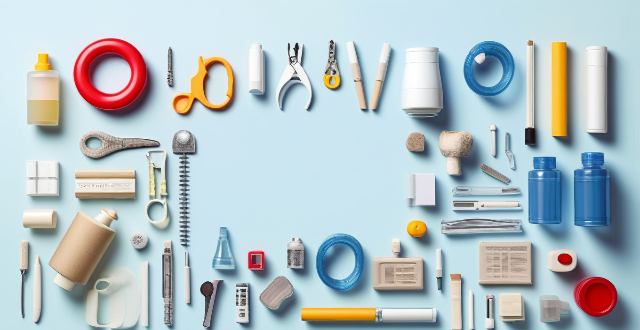
What kind of first aid supplies should I have in my home emergency kit ?
This article provides a comprehensive list of essential items to include in a home emergency first aid kit. It covers various categories such as adhesive bandages, gauze and roller bandages, medical tape and safety pins, antiseptics and disinfectants, pain relievers and fever reducers, tools and miscellaneous items, and personal items. The article emphasizes the importance of regularly checking expiration dates and replacing supplies as needed. It also suggests ensuring that all family members are aware of the kit's location and how to use its contents properly.

What are the essential items to include in a home first aid kit ?
A well-stocked first aid kit is an essential component of any home. It should contain items that can help you deal with minor injuries and illnesses that may occur in your household. Here are some of the essential items that you should include in your home first aid kit: 1. Adhesive Bandages 2. Sterile Gauze Pads and Rolls 3. Medical Tape 4. Antiseptic Wipes or Solution 5. Tweezers 6. Scissors 7. Thermometer 8. Pain Relievers 9. Antihistamines 10. Cold and Hot Packs 11. Latex Gloves 12. Safety Pins

How important is it to have a portable emergency kit when traveling abroad ?
**The Importance of a Portable Emergency Kit for Traveling Abroad** Embarking on an international journey requires preparation, especially in handling unforeseen events. Here's why carrying a portable emergency kit is crucial: 1. **Preparedness for Unexpected Circumstances**: It helps manage medical emergencies, natural disasters, and travel delays effectively. 2. **Components of an Ideal Emergency Kit**: Includes first aid supplies, hygiene items, nutrition, lighting, important documents, and protective gear. 3. **Customization Based on Destination**: Tailor the kit to climate considerations and location-specific needs for better preparedness. 4. **Peace of Mind**: Being prepared offers peace of mind, allowing focus on enjoying the trip rather than worrying about potential issues.
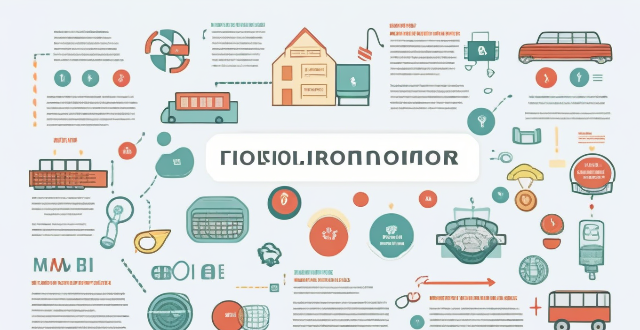
How do I assemble an emergency preparedness kit for my office ?
The text provides a detailed guide on how to assemble an emergency preparedness kit for your office, highlighting the importance of being prepared for potential emergencies. It outlines the steps involved in creating a comprehensive kit, including identifying potential emergencies, choosing a suitable container, and selecting essential items such as water, food, first aid supplies, light sources, battery-powered radios, personal items, tools, important documents, and sanitation supplies. The article emphasizes the need to regularly check and update the kit to ensure its usability and relevance to potential emergencies in the area.

What should be included in a basic emergency kit ?
A basic emergency kit should include essential items such as water, non-perishable food, a first aid kit, warm clothing and bedding, lighting and communication tools, a multipurpose tool, cash, personal documents, and a map. The contents may vary depending on the type of emergency and household size. It is important to regularly review and update the kit to ensure it remains effective.

How important is an earthquake emergency kit, and what should it contain ?
The text discusses the importance of being prepared for earthquakes by having an emergency kit with essential items such as water, food, a first aid kit, light sources, clothing, bedding or shelter, tools, sanitation and personal needs, important documents, cash, communication tools, maps and information. It also mentions additional considerations like pet care and multi-tools.
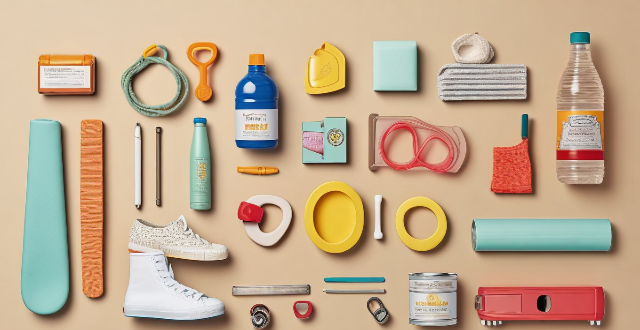
Are there any special considerations for creating an emergency kit for children ?
Special considerations for creating an emergency kit for children include age-appropriate items, comfort items, snacks and water, clothing and footwear, and entertainment. It is important to tailor the contents of the kit to the child's needs and abilities, and include items that can help to calm and reassure the child during an emergency situation.

What is the best way to store an emergency kit in a small apartment ?
When it comes to emergency preparedness, having an emergency kit is essential. However, if you live in a small apartment, finding the space to store all the necessary items can be challenging. Here are some tips on how to store an emergency kit in a small apartment: Determine the type of emergency kit you need, choose the right container, organize your kit, and store it properly. Keep your emergency kit in an easily accessible location, avoid storing it under heavy objects or in areas that may be blocked by debris during an emergency, check it regularly to ensure that items are still usable and up-to-date, replace any expired items promptly, and consider storing additional copies of important documents in your emergency kit. By following these tips, you can effectively store an emergency kit in a small apartment while still being prepared for any potential emergencies.
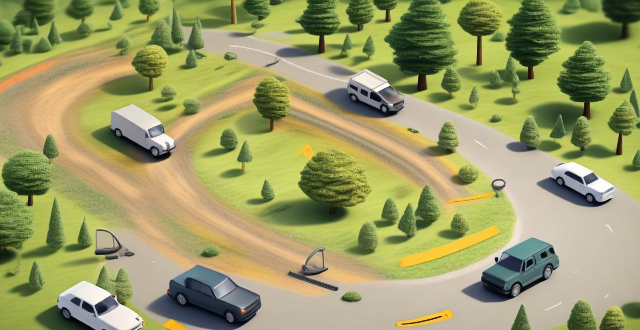
What are the safety precautions I should take during a solo road trip ?
When preparing for a solo road trip, prioritize safety by maintaining your vehicle, packing an emergency kit with essentials like a first aid kit and tools, planning your route using GPS and paper maps, ensuring communication is possible through a charged phone and roadside assistance, staying alert and locking doors for personal safety, checking the weather forecast and having rain gear, taking care of your health by staying hydrated and taking breaks, carrying necessary documentation including driver's license, registration, and insurance, and making copies of important documents. These precautions will help ensure a safer and more enjoyable journey.

How can I customize my emergency kit for specific medical needs ?
Customizing an emergency kit for specific medical needs is crucial for individuals with health conditions. To tailor your kit, assess your medical needs, list down medications, and identify potential complications. Incorporate specialized equipment like diabetes management tools or heart condition medication. Include general first aid supplies, information cards, and instruction manuals. Don't forget communication tools and personal comfort items to alleviate stress during emergencies. Being prepared can significantly impact managing your health in disaster situations.

How often should I check and replace items in my emergency preparedness kit ?
Maintaining an emergency preparedness kit is crucial for ensuring you have the necessary supplies in case of unexpected events. The frequency of checking and replacing items depends on several factors, including expiration dates and usage. General guidelines include monthly quick inspections, annual detailed reviews, and immediate replacements after use. Specific items to consider are medical supplies, food and water, batteries, clothing, and tools. Best practices include labeling expiration dates, keeping a list, and staying informed. Regular maintenance ensures your kit is always ready for emergencies.
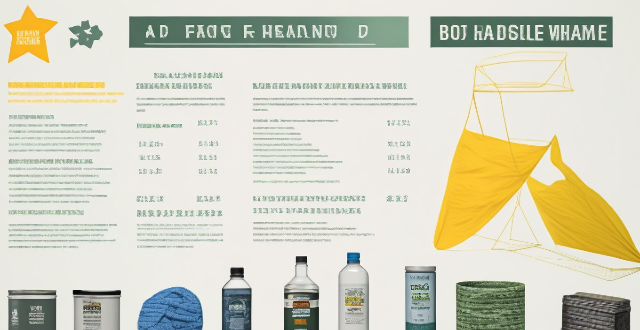
Is there a standard list of supplies for an earthquake survival kit ?
There is a standard list of supplies recommended for an earthquake survival kit, including water, non-perishable food, first aid supplies, warm clothing, shelter items, tools and supplies, important documents, and miscellaneous items. It's important to customize your kit based on your specific needs and circumstances.

How do I prepare a travel first aid kit for my next trip ?
When preparing for your next adventure, it's essential to pack a travel first aid kit. This will ensure that you are prepared for any unexpected injuries or illnesses that may occur while away from home. Here are some steps to follow when creating your own travel first aid kit: 1. Choose the right bag or container that is durable, compact, and easy to carry. A waterproof bag with multiple compartments and pockets is ideal as it allows for efficient organization of supplies. 2. Pack essential medical supplies such as bandages, antiseptic wipes, gauze pads, adhesive tape, and scissors. These items are crucial for treating cuts, scrapes, and other minor injuries. Include pain relievers, allergy medication, and motion sickness pills. 3. If taking regular medications, bring enough to last throughout the trip. Over-the-counter drugs like antacids, laxatives, and anti-diarrheal pills should also be packed, along with any prescription medications needed. 4. Depending on the destination and activities planned, specialized items may be necessary. For example, insect repellent, sunscreen, and blister kits are useful for hiking or camping trips. Anti-malarial medication and water purification tablets are important for tropical climates. 5. Customize the travel first aid kit based on individual needs. If allergies or chronic conditions exist, include appropriate medications and supplies. Don't forget to pack a small first aid manual or guidebook for reference in case of an emergency.
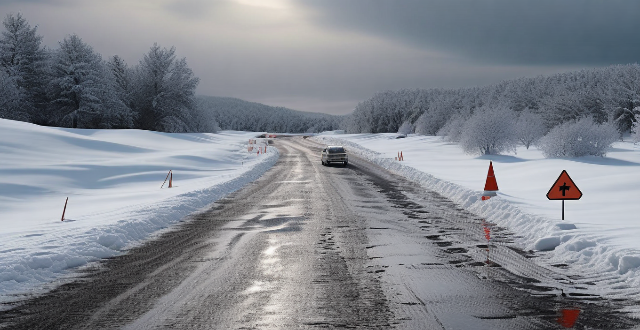
How does weather affect traffic safety ?
Weather conditions significantly impact traffic safety, with adverse weather increasing the risk of accidents. Understanding how different weather conditions affect driving abilities and taking necessary precautions are essential for ensuring safety. Rain, snow, ice, fog, and wind all pose unique challenges to drivers, such as reduced visibility and slippery roads. To drive safely in these conditions, maintain vehicle readiness through regular maintenance and adjust driving habits by slowing down and increasing following distance. Additionally, being prepared for emergencies with an emergency kit and planning your route can further enhance safety. By prioritizing safety and adapting to weather conditions, drivers can significantly reduce the likelihood of accidents and ensure safer journeys for everyone on the road.

What are some essential items every woman should carry for safety while traveling ?
Traveling can be an exciting and enriching experience, but it's important to prioritize safety, especially for women who may face unique challenges. Here are some essential items that every woman should carry to ensure their safety while on the road: 1. Personal Alarm 2. Pepper Spray 3. Whistle 4. Mobile Phone 5. ID and Emergency Contact Information 6. First Aid Kit 7. Money and Cards 8. Chargers and Power Banks 9. Headphones or Earbuds 10. Trustworthy Travel Companion (if possible) 11. Knowledge of Local Area and Culture 12. Door Stop Alarm or Wedge 13. Reflective Gear or Wearable Tech 14. Water Bottle 15. Mini Flashlight or Keychain Light 16. Duct Tape or Cable Ties 17. Extra Clothing and Rain Gear 18. Multi-tool or Small Knife 19. Sun Protection 20. Seat Cutter or Glass Breaker

What are some essential travel safety tips for international tourists ?
Traveling to a foreign country can be an exciting adventure, but it's important to prioritize safety during your journey. Here are some essential travel safety tips for international tourists: ## Research Your Destination Before embarking on your trip, research the destination thoroughly. Familiarize yourself with local customs, laws, and cultural norms. This will help you avoid any misunderstandings or unintentional offenses that could put you in harm's way. ### Learn Basic Phrases in the Local Language Knowing how to say simple phrases like "hello," "goodbye," "thank you," and "I don't understand" in the local language can go a long way in helping you communicate with locals and navigate your way around. ### Check the Weather Forecast Be prepared for any weather conditions by checking the forecast before you leave. Pack appropriate clothing and gear to ensure your comfort and safety throughout your trip. ## Stay Informed About Safety Concerns Stay up-to-date on any safety concerns or travel warnings related to your destination. The U.S. Department of State maintains a website with current information on safety issues and advisories for travelers. ### Register With Your Embassy or Consulate Register your travel plans with your embassy or consulate so they can contact you in case of an emergency or natural disaster. This is especially important if you plan to visit remote areas where communication might be limited. ## Be Cautious With Your Belongings When traveling abroad, it's crucial to take precautions to protect your belongings from theft or loss. Here are some tips to keep your valuables safe: ### Keep Your Valuables Close at Hand Carry only what you need when sightseeing or exploring new places. Keep your passport, cash, credit cards, and other valuables secure in a money belt or hidden pocket. ### Use Hotel Safes Wisely Hotel safes are convenient for storing valuable items while you're out and about. However, be aware that not all hotel safes are foolproof. Some may have vulnerabilities that could allow thieves to access your belongings. Always exercise caution when using hotel safes and consider bringing along a portable lock for added security. ### Be Mindful of Your Surroundings Stay alert and aware of your surroundings at all times. Avoid displaying expensive jewelry or electronics in public places, as these items can attract unwanted attention from pickpockets and thieves. If possible, try to blend in with the local crowd by dressing conservatively and avoiding flashy accessories. ## Follow Local Laws and Customs Respecting local laws and customs is essential for staying safe while traveling abroad. Here are some tips to help you navigate this aspect of international travel: ### Obey Local Laws Familiarize yourself with the legal system and laws of the country you're visiting. This includes understanding the penalties for breaking the law, which can vary widely depending on the country. Remember that what might be legal in your home country could be illegal elsewhere. ### Respect Local Customs Be mindful of local customs and traditions when interacting with locals. Dress appropriately for religious sites and respect their rules regarding photography and behavior. Additionally, be aware of social norms regarding physical contact (such as handshakes or hugs) and follow them accordingly. ## Seek Medical Attention When Needed If you become ill or injured during your trip, seek medical attention promptly. Here are some tips to help you stay healthy while traveling: ### Pack a First Aid Kit Bring a basic first aid kit with essential items such as bandages, antiseptic wipes, pain relievers, and any prescription medications you might need. This will help you handle minor injuries and illnesses without having to search for medical supplies in an unfamiliar place. ### Know Where to Go for Medical Help Research nearby hospitals and clinics before you leave home so you know where to go if you need medical assistance during your trip. It's also a good idea to purchase travel insurance that includes coverage for medical emergencies.
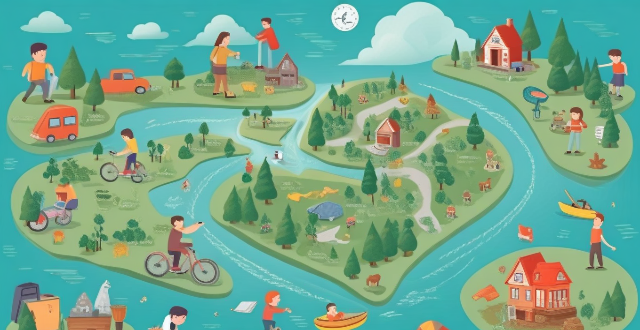
How can I educate my family about earthquake safety and evacuation procedures ?
Educating your family about earthquake safety and evacuation procedures is crucial due to the unpredictable nature of earthquakes. Understanding the basics of earthquakes, creating a safety plan, learning evacuation procedures, conducting drills, and staying informed are all important steps in ensuring your family's safety during an earthquake. By following these steps, you can prepare your family for earthquakes and ensure they know what to do in case of an emergency.

What are the different types of safety signs and their meanings ?
This text describes the different types of safety signs and their meanings. Prohibition, warning, mandatory, fire safety, first aid, and information signs are all used to provide important safety information in a variety of environments. Each type of sign has a specific shape, color, and symbol or text that conveys a particular message about what actions should or should not be taken.

What should I do to ensure my personal safety during a backpacking trip ?
Backpacking trips can be an exhilarating adventure, but it's crucial to prioritize personal safety. Here are some essential tips to help you stay safe while enjoying the great outdoors: ## Research and Plan Ahead - **Research the area**: Familiarize yourself with the terrain, weather patterns, and potential hazards of your destination. - **Plan your route**: Create a detailed itinerary and share it with someone who is not accompanying you on the trip. - **Check the forecast**: Keep an eye on the weather and be prepared to adjust your plans accordingly. ## Essential Gear and Equipment - **Pack appropriate gear**: Ensure you have all the necessary equipment, including a tent, sleeping bag, cooking supplies, and navigation tools. - **Wear proper clothing**: Dress in layers and choose fabrics that can handle various weather conditions. - **Carry a first aid kit**: Include items such as bandages, antiseptic wipes, and any prescription medications you might need. ## Stay Informed and Connected - **Bring a map and compass**: Even if you have a GPS device or smartphone, traditional navigation tools can be lifesavers. - **Have a reliable means of communication**: Carry a charged cell phone and consider bringing a satellite phone or emergency beacon for remote areas. - **Know where to find help**: Locate the nearest ranger station, medical facility, or other sources of assistance before you set out. ## Practice Good Trail Etiquette - **Stick to established trails**: Avoid veering off the path to minimize your impact on the environment and reduce the risk of getting lost. - **Respect wildlife**: Maintain a safe distance from animals and never approach them. - **Be aware of other hikers**: Yield appropriately and communicate clearly when passing others on the trail. ## Follow Basic Safety Guidelines - **Hike with a partner**: Having someone with you can significantly increase your safety. - **Avoid hiking at night**: Visibility is limited, and nocturnal creatures are more active after dark. - **Stay hydrated and nourished**: Drink plenty of water and eat regular meals to maintain your energy levels. By following these guidelines, you can enjoy a safe and enjoyable backpacking trip while minimizing risks and being prepared for any situation that may arise. Remember, safety should always be your top priority when venturing into the wilderness.

Can you provide examples of different types of safety drills ?
Safety drills are essential exercises designed to prepare individuals and organizations for emergencies. They help ensure that everyone knows what to do in case of an unexpected event, reducing the risk of injury or loss of life. Here are some examples of different types of safety drills: 1. Fire Drills: Alerting occupants of the building by sounding alarms, guiding them to exit routes and assembly points, ensuring that all areas are cleared, conducting a headcount to account for all individuals. 2. Earthquake Drills: "Drop, Cover, and Hold On" procedure to protect oneself from falling objects, evacuating the building only if it is safe to do so, knowing how to turn off utilities like gas and water to prevent further damage. 3. Active Shooter Drills: Knowing the "Run, Hide, Fight" strategy, how to report an active shooter situation to authorities, safe evacuation techniques without drawing attention to oneself. 4. Chemical Spill or Hazmat Incident Drills: Proper use of personal protective equipment (PPE), safe evacuation procedures, reporting the incident to emergency services, decontamination procedures for those who may have been exposed. 5. Medical Emergency Drills: Basic Life Support (BLS) and CPR techniques, use of automated external defibrillators (AEDs), first aid kit usage and management of injuries until professional help arrives.

How do safety signs help in preventing accidents and injuries at workplaces ?
Safety signs play a crucial role in preventing accidents and injuries at workplaces. They provide important information about potential hazards, safety procedures, and emergency exits. By following the instructions on these signs, employees can avoid dangerous situations and stay safe while working. There are four main types of safety signs: warning signs, mandatory signs, prohibition signs, and emergency signs. Warning signs alert workers to potential hazards or dangerous conditions; mandatory signs indicate actions that must be taken to ensure safety; prohibition signs prohibit certain actions that may cause harm or damage; and emergency signs guide workers to emergency exits, first aid kits, and fire extinguishers. Safety signs have numerous benefits. They increase awareness by being brightly colored and placed in prominent locations. They prevent accidents by providing clear instructions on what actions need to be taken to prevent accidents. They ensure compliance with regulations by displaying the appropriate signs required by law. Finally, they improve evacuation processes by indicating emergency exits and evacuation routes. In conclusion, safety signs are essential for creating a safe work environment. By following the guidelines on safety signs, workers can protect themselves and their colleagues from harm and prevent accidents and injuries at workplaces.

Are there any safety precautions I should take during a wildlife tour ?
Wildlife tours can be an exciting and enriching experience, but they also come with certain risks. It is important to take necessary precautions to ensure your safety and the well-being of the animals you are observing. Some safety measures that you should consider before embarking on a wildlife tour include staying alert, following guidelines and rules, dressing appropriately, bringing essential items, and taking specific safety measures for different wildlife encounters. By following these safety precautions, you can minimize the risks associated with wildlife tours and enjoy a memorable experience while respecting the natural environment and its inhabitants.

How should I prepare my vehicle for a long-distance road trip ?
Preparing Your Vehicle for a Long-Distance Road Trip A long-distance road trip is an exciting adventure, but it's essential to ensure that your vehicle is in top condition before hitting the open road. Here are some steps you can take to prepare your car for the journey ahead: Check the basics such as tires, fluids, lights, and battery. Perform safety checks on brakes, suspension, belts, and hoses. Make sure your entertainment system and charging ports are working correctly. Consider installing seat covers and using organizers or storage solutions to keep items tidy and accessible during the trip. Don't forget to pack an emergency kit with jumper cables, a flashlight, reflective triangles, and a first aid kit just in case you encounter any issues along the way.

What are the safety regulations for working with heavy machinery ?
When working with heavy machinery, it is crucial to follow safety regulations to prevent accidents and injuries. These include wearing appropriate personal protective equipment (PPE), receiving proper training and maintaining certifications, conducting regular maintenance and pre-operation checks on machinery, practicing safe work practices such as keeping the work area clear and using machine guards, and being prepared for emergencies by knowing emergency procedures, having a first aid kit available, and reporting incidents. By adhering to these guidelines, workers can help ensure a safe working environment for themselves and others.

How do I choose the right rental car for a road trip ?
When planning a road trip, selecting the right rental car is crucial for comfort, safety, and enjoyment. Here's how to make the best choice: **Consider Your Travel Needs** - Number of Passengers: Determine how many people will be traveling with you. A compact car might suffice for two adults, but a larger group may require an SUV or minivan. - Luggage Space: Think about the amount of luggage you'll have. If you're packing heavily or bringing bulky items like sports equipment, opt for a car with ample trunk space or a hatchback. **Assess the Terrain** - City Driving: If your trip involves mostly city driving, a smaller, fuel-efficient car will be easier to navigate through traffic and park. - Rural or Mountainous Areas: For winding roads and rough terrain, consider a vehicle with better handling and ground clearance, like an SUV or an all-wheel drive vehicle. **Set Your Budget** - Fuel Economy: Check the fuel efficiency ratings of different cars. A more economical car can save you money on gas during your trip. - Rental Rates: Look at the daily or weekly rates for different types of vehicles. Higher-end models and larger vehicles typically cost more to rent. **Check for Features and Add-ons** - GPS and Navigation: Decide if you need in-car navigation. Some rentals come with built-in systems or you might use your smartphone with a mount. - Entertainment: If you'll have children on board, look for rentals that offer rear-seat entertainment systems to keep them occupied. **Safety First** - Safety Ratings: Research the safety ratings of the rental cars you're considering. Choose vehicles with high safety scores to protect you and your passengers. - Emergency Kit: Ensure the rental includes an emergency kit (e.g., spare tire, jack, jumper cables) in case of unforeseen circumstances. **Read Reviews and Ask Questions** - Customer Experience: Read reviews from previous renters to learn about their experiences with specific car models or rental companies. - Insurance Options: Understand the insurance options provided by the rental company and whether it's worth purchasing additional coverage. **Book Early for Best Deals** - Advance Reservations: The earlier you book, the more likely you are to get the car you want at a better rate. - Comparison Shop: Use comparison websites to find the best deals among various rental companies.
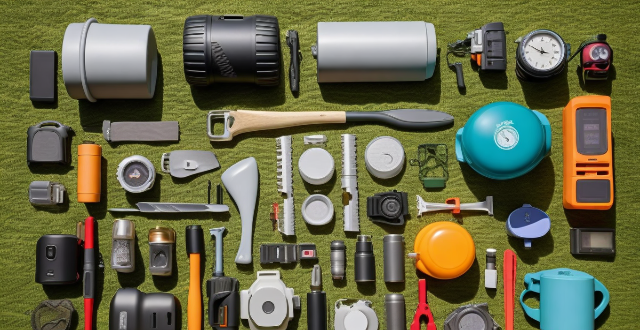
How can I prepare for a multi-day hiking trip ?
Going on a multi-day hiking trip requires careful preparation in terms of gear, physical fitness, planning, and safety measures. Essential items include a well-fitted backpack, layered clothing, comfortable footwear, sleeping gear, cooking supplies, navigation tools, first aid kit, hydration methods, and miscellaneous accessories like headlamps and insect repellent. Physical preparation involves cardiovascular training, strength exercises, and practice hikes. Planning should cover route familiarization, weather forecast checks, and adherence to Leave No Trace principles. Before departing, establish resupply strategies and emergency plans. By following this comprehensive guide, hikers can ensure their safety and comfort during extended treks.

How do safety regulations affect the manufacturing industry ?
Safety regulations are critical in manufacturing for worker safety, environmental protection, and product quality assurance but can increase costs and administrative burden while potentially slowing innovation.
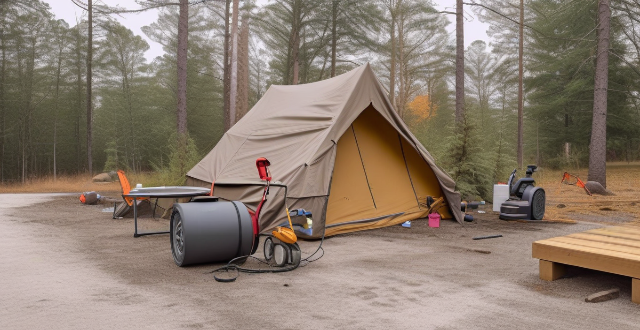
Are there any safety tips I should know before going on an outdoor adventure ?
Before embarking on an outdoor adventure, prioritize safety by researching and planning, preparing appropriate equipment, staying connected, carrying first aid and emergency kits, ensuring hydration and nutrition, dressing appropriately, being aware of weather conditions, respecting wildlife, and following Leave No Trace principles to minimize environmental impact.